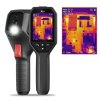mg2361
Senior Member
I'm curious, are the Dp sensor readings delayed now when you stroke the levers? If yes, does the angle sensor readings respond immediately?



I'm also wondering if there is a cap that is supposed to sit on the free end of the spring

I don't remember how I figured that out but you might try to find out where that hissing noise is coming from.
The info was from john deere and it mentioned that if any of the circuit reliefs were set to a lower pressure than the main relief, that circuit relief would turn into a main relief.
They will only turn into the main relief when that function is activated (if they are set lower than the system relief). With the spool for that function in neutral, the relief for that function is out of the equation.


The compensators appear to be in the motor circuits and not the cylinder circuits
When I go to use the thumb will the thumb reliefs turn into a main relief because 2100 psi is so much lower than 5000 psi? If I were using another function at the same time would it be limited to the 2100 psi the thumb is set at?






